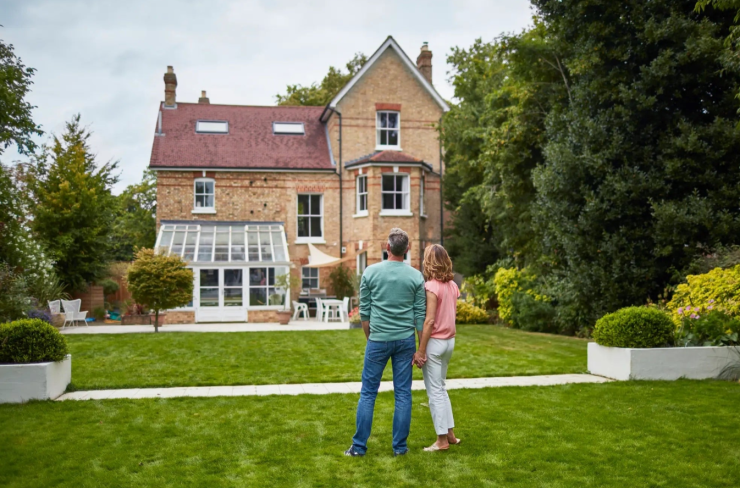Navigating the U.S. Contractor Market in 2025: What Employers and Independent Contractors Need to Know
As we move through 2025, the contractor market in the United States is undergoing major shifts that affect both independent...

There’s something undeniably charming about older homes — ornate woodwork, hidden pocket doors, and exposed brick walls that whisper history. But with all that character can come some serious maintenance concerns. While not every issue is a dealbreaker, it’s essential to know what you’re getting into before signing the dotted line.
Whether you're dreaming of restoring a vintage gem or simply want to be fully informed, here's a detailed guide to the most common problems in older homes — and what they might cost to fix.
Need a jumpstart?
Check out our [Home Inspection Checklist] for a room-by-room breakdown of what to look for.
Cracks and uneven floors can signal foundation issues — a common problem in older homes. Causes range from natural settling and tree roots to water damage and seismic activity. It's wise to bring in a structural engineer to evaluate the extent of any damage and suggest fixes.
Red Flags to Watch For:
• Cracks in walls (interior or exterior)
• Stuck doors or windows
• Sloping floors
Average Repair Cost: Around $4,300, but can vary widely depending on severity.
Roofs don’t last forever. Depending on materials, climate, and upkeep, you may be dealing with missing shingles, sagging gutters, or water damage in the attic.
Look Out For:
• Water spots on ceilings
• Shingles curling or missing
• Moisture or mold in the attic
Average Cost to Replace: About $7,900, split between materials and labor.
Homes built before 1978 may contain lead-based paint or asbestos — both of which pose health risks. Neither is visible without testing, so make sure your inspection covers both.
Key Indicators:
• Cracking or peeling paint
• Old insulation, pipes, or siding
Typical Costs:
• Lead paint removal: ~$2,900
• Asbestos remediation: From $2,000 (full-home removal can be $15,000–$30,000)
These invisible, odorless gases are dangerous if undetected. Radon comes from soil and can cause long-term health issues. Carbon monoxide usually leaks from malfunctioning gas appliances.
Preventive Steps:
• Test for radon before purchase
• Install carbon monoxide detectors on every level
Mitigation Costs:
• Radon system: ~$1,000
• CO detectors: $10–$15 each
Technology has changed, but many old homes haven’t kept up. Homes with knob-and-tube wiring, 2-prong outlets, or undersized electrical panels will likely need significant upgrades — especially if you're adding modern appliances.
Warning Signs:
• Flickering lights
• 2-prong outlets
• Warm outlets or light switches
Estimated Rewiring Cost: About $1,300 to start; full updates may be more.
From lead pipes to tree-root invasions, plumbing is a big concern in old homes. Pipes made of polybutylene or lead can corrode, leak, or contaminate drinking water.
Clues to Watch For:
• Low water pressure
• Slow drains
• Leaky faucets or visible corrosion
Average Pipe Replacement Cost: $2,500–$15,000, depending on scope.
Drafty windows and lack of insulation can drive up heating and cooling bills. Fortunately, energy efficiency can often be improved without compromising your home’s historic charm.
Efficiency Issues to Identify:
• Drafts despite closed windows
• Condensation between window panes
• Lack of attic or wall insulation
Upgrade Costs:
• Energy-efficient windows: ~$450 per unit
• Blown-in insulation: ~$1–$1.50 per sq. ft.
Furnaces, air conditioners, and water heaters all have lifespans — and old ones cost more to run and are more prone to breaking down.
Check For:
• Uneven heating or cooling
• Strange noises from HVAC systems
• Water pooling around your water heater
Replacement Estimates:
• Furnace: ~$3,100
• A/C Unit: ~$4,600
• Water Heater: $200–$600 (tank), $600–$1,500 (tankless)
Many older homes don’t feature open floor plans or modern kitchens. Features like wallpaper, popcorn ceilings, and cramped rooms are common — but fixable with time and budget.
Keep in Mind:
• Load-bearing walls can’t always be removed
• Some projects may require permits or structural work
Full Remodel Cost: Averages $46,500, with a 20% cushion for surprises.
If the inspection uncovers major structural damage or multiple costly issues — and you're not ready for a long-term renovation — it might be smarter to pass. But if the price is right and the issues are manageable, an older home can be a worthwhile and rewarding investment.
Once you’ve addressed the big stuff, you can start settling in and adding personal touches. With the right mindset and resources, restoring an older home can be a fulfilling (and financially smart) journey.
There’s something undeniably charming about older homes — ornate woodwork, hidden pocket doors, and exposed brick walls that whisper history. But with all that character can come some serious maintenance concerns. While not every issue is a dealbreaker, it’s essential to know what you’re getting into before signing the dotted line.